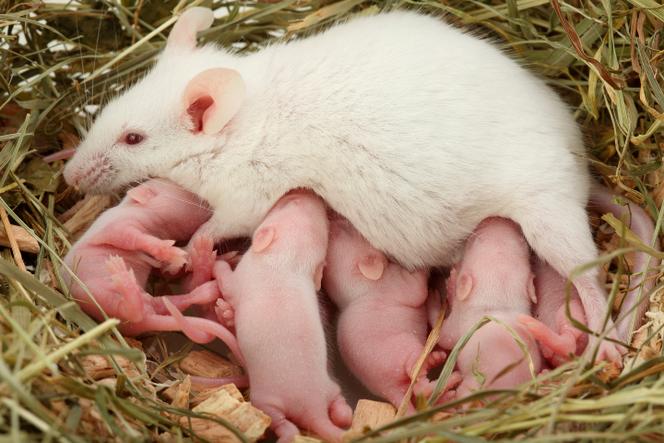


After every mammal birth, if everything goes well, a small miracle happens: maternal attachment. But to what extent are maternal behaviors linked to changes in the brains of mothers-to-be during pregnancy? In the October 6 issue of the journal Science, a British team from the Francis-Crick Institute in London provided part of the answer. In mice, two sex hormones remodel the mother's brain during gestation, promoting behaviors such as returning to the nest, grooming and breastfeeding.
It was long thought that the sex hormones released during childbirth played a decisive role in the onset of maternal care. However, the British study showed that estradiol and progesterone are active in the brain of the mother-to-be even before she gives birth.
Here's how. These two hormones target a small region of the hypothalamus, called the medial preoptic area, known for its important role in the control of mating and offspring care. To be more precise, these hormones act on a small population of neurons within this region, called the "galanin neurons," which govern maternal behavior.
In female mice that had never mated, the authors made these neurons insensitive to one or both of these hormones by selectively inactivating the hormone receptors carried by the cells. Then they let half of those females mate. As a result, those that had offspring showed a complete loss of feeding behavior.
But the two hormones worked differently. Estradiol made the neurons more excitable, fortifying the mothers' receptiveness to their offspring's signals. This modification faded as the offspring grew.
Progesterone, on the other hand, encouraged the formation of excitatory synapses on the galanin neurons. This rewiring persisted, reinforcing maternal behavior long after the offspring had been weaned. "This observation would explain why females of many species behave maternally towards offspring that are not their own, once they have experienced motherhood," said Margaret McCarthy from the University of Maryland in Baltimore (USA).
London team coordinator Johannes Kohl said, "What's fascinating is to see that the brain prepares well before birth for this major life change." Its rewiring leads to "a shift in priorities": While virgin mice focus on mating, mothers must ensure the survival of their young. Postdoctoral fellow Rachida Ammari, first author of the paper, added, "To prepare for this future behavioral challenge, there is a window of plasticity in the brain."
According to the authors, women's brains also undergo a similar process during pregnancy. In mothers' brains, in fact, there is a before and after those nine months of accommodation and growth of the fetus in utero, as was revealed by a Dutch team in 2022. On the one hand, pregnancy seems to induce specific and lasting changes in the volume of cerebral gray matter. It reorganizes a small region involved in our ability to put ourselves in someone else's shoes, which is the same region that is activated when mothers look at their babies. This reorganization seems to last at least two years after delivery. On the other hand, the brain's white matter is also remodeled. As in mice, this reconfiguration seems to be linked to estradiol, which is released during the third trimester of pregnancy. This could be one of the keys to a mother's attachment to her offspring and her receptiveness to the signals they send her, even if it's not the only determining factor. A special bond, of course, can also develop during the process of adoption.
